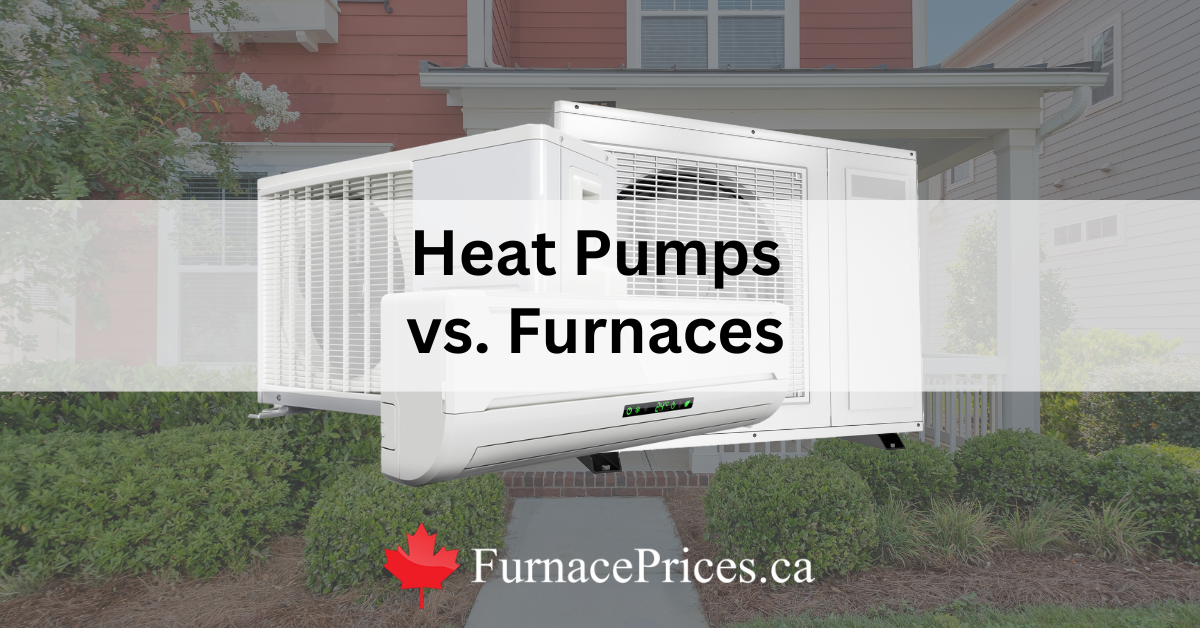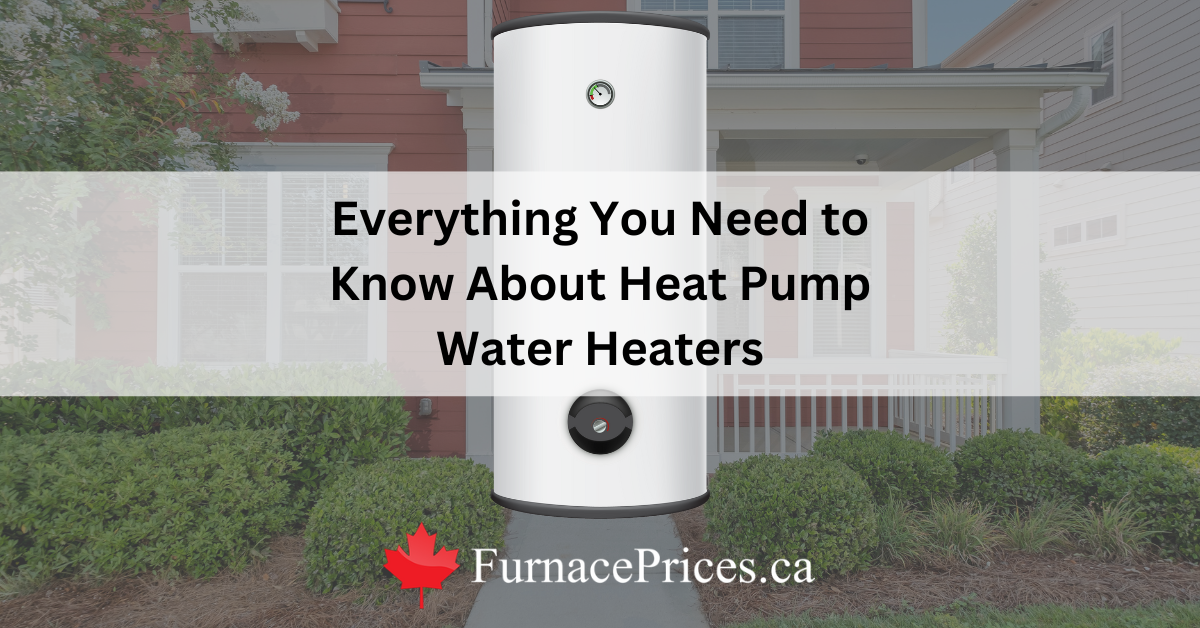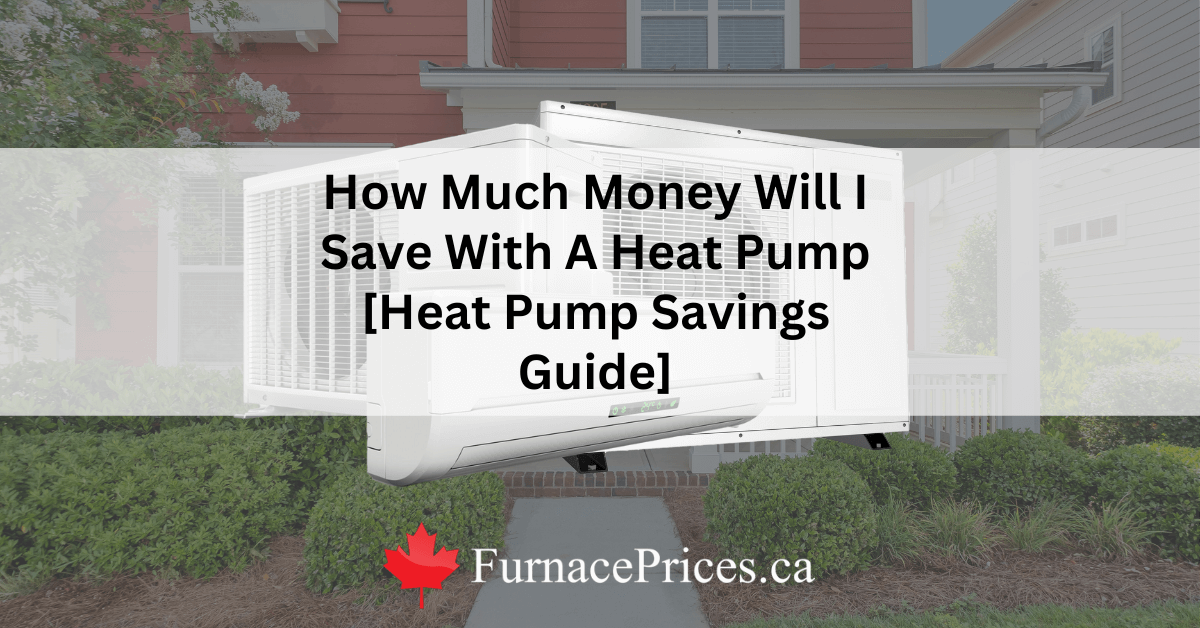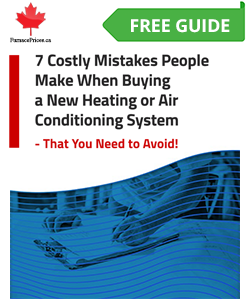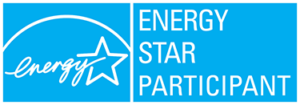You set your thermostat. You expect it to follow your orders. But then, without warning, auxiliary heat takes over. You didn’t ask for it, yet here it is, running full blast.
Suddenly, you’re wondering what’s going on. Is it necessary? Is it a glitch? And why does it cost so much? If you’ve ever wondered whether auxiliary heat is working for you or against you, let’s break it down.
What is Auxiliary Heat?
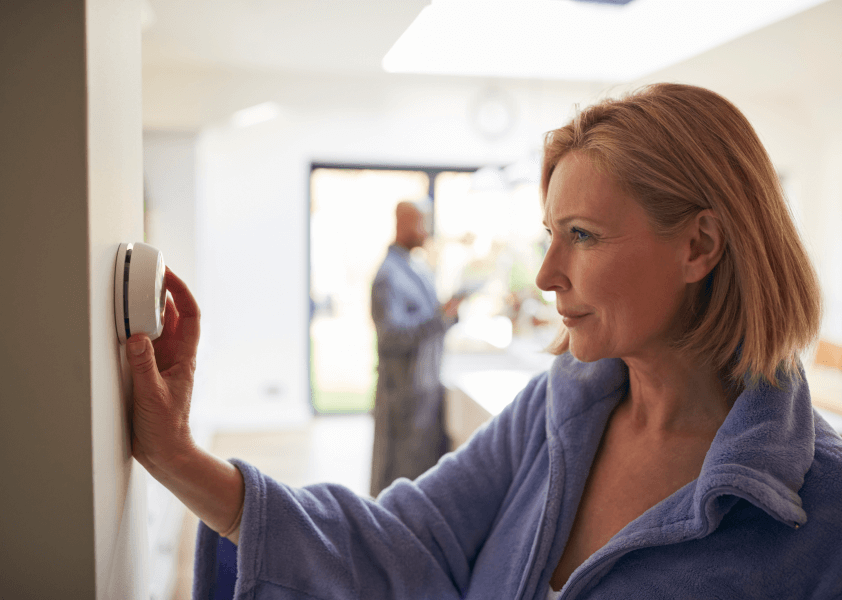
When you see “AUX” on your thermostat, it stands for auxiliary heat—a backup heating system built into your heat pump. Heat pumps are great at pulling warmth from the air outside, but they may struggle to keep up when temperatures drop too low. That’s when auxiliary heat kicks in to help.
Auxiliary heat turns usually around -2 to 4°C (28-40°F), depending on your system.
Your thermostat decides when to turn on auxiliary heat. This happens when the system detects that your home isn’t warming up fast enough or when outdoor temperatures get too cold for the heat pump to work efficiently.
Usually, there’s nothing to worry about when you see “AUX” on your thermostat. It means auxiliary heat is keeping your home warm when your heat pump alone isn’t enough. But if it’s running constantly, that could mean there’s an issue, and you might want to check it out.
Since the average heating cost in Canada is around $135 per month, relying on AUX heat too often could drive your bill up significantly. In fact, your energy costs could increase by as much as 50% when AUX heat is running.
That’s because it may be relying on a less-efficient type of heating like electrical resistance heating, which will consume more electricity and increase your heating costs.
How Does Auxiliary Heat Work?
Your thermostat constantly monitors the indoor temperature. If it notices that your heat pump isn’t warming your home fast enough (usually more than a 2-3°C difference from the set temperature), it activates auxiliary heat.
Inside your air handler, there may be electric resistance heating elements (similar to the ones inside the toaster). When auxiliary heat turns on, these coils start heating up, and your system blows air over them, sending warm air through your ducts.
Your heat pump is still running at this point, trying to pull whatever warmth it can from outside. The auxiliary heat just adds extra warmth to make up the difference.
Once your home reaches the set temperature, the system turns off the auxiliary heat first, leaving the heat pump to handle the rest.
In Canada and the northeast USA, the auxiliary heating system may be a gas furnace instead of resistance heating strips, which tends to be a more cost-effective option to operate and more suited to harsher winters, but more expensive to install initially.
Defrost Mode Can Also Trigger Auxiliary Heat
When outdoor temperatures are really cold, frost can build up on your heat pump’s outdoor coil. The system will occasionally switch into defrost mode. It temporarily stops regular heating and switches to cooling to melt the ice.
Instead of blowing cold air inside, auxiliary heat kicks in automatically to keep your home warm.
How Do You Tell If You Have Auxiliary Heat?
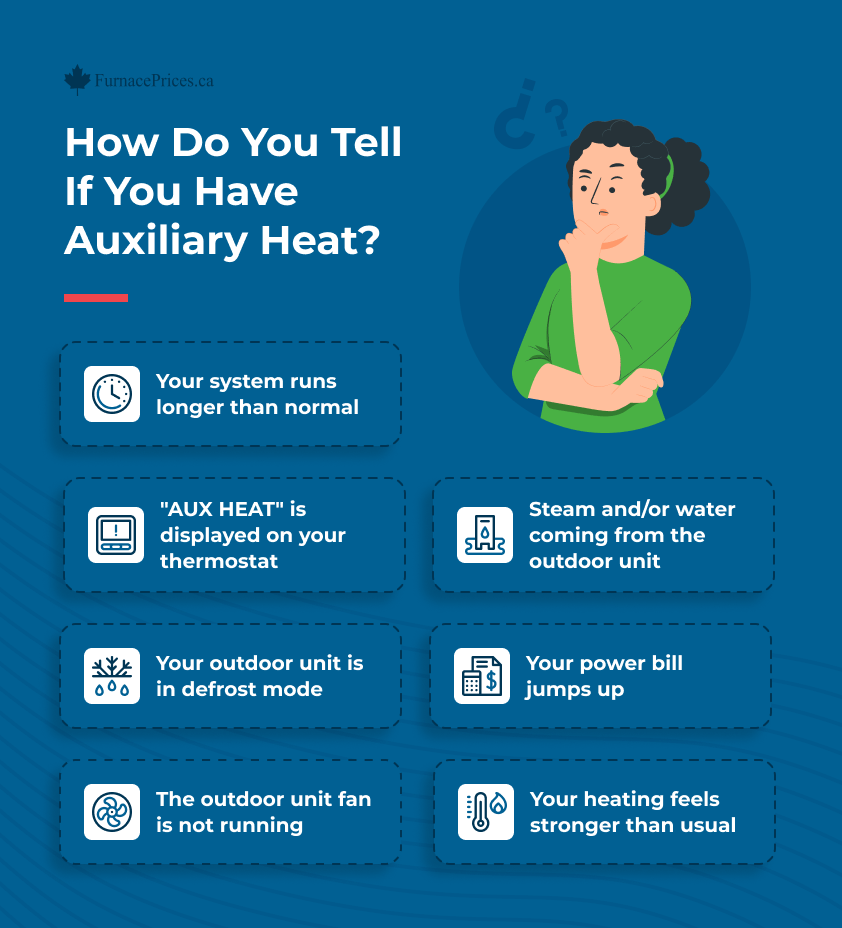
Most heat pumps come with auxiliary heat, especially in colder climates where they need a backup source of warmth. Here are a few signs that can tell you whether auxiliary heat is turned on:
- “AUX HEAT” is displayed on your thermostat: The clearest sign is right on your thermostat screen. If you see “AUX” or “Auxiliary Heat,” it means the system has turned it on to help warm your home.
- Your heating feels stronger than usual: Heat pumps blow out warm but not super-hot air. If your vents suddenly feel like a blast of heat from a traditional furnace, that’s likely auxiliary heat kicking in.
- Your system runs longer than normal: Auxiliary heat is meant to help when your heat pump struggles, so you might notice your system staying on longer to reach the temperature you set.
- Your power bill jumps up: Since auxiliary heat uses a lot of electricity, frequent use can make your energy bill noticeably higher.
- Your outdoor unit is in defrost mode: If your heat pump’s outdoor unit stops running for a short time while steam rises from it, that’s defrost mode. During this time, auxiliary heat takes over to keep your home warm.
- Steam and/or water coming from the outdoor unit: This is another sign of defrost mode. When your heat pump temporarily switches to cooling mode to melt ice, it creates steam or water runoff. During this time, auxiliary heat runs inside to keep your home warm.
- The outdoor unit fan is not running: Normally, your outdoor unit’s fan should spin when the system is heating. But during defrost mode, the fan stops completely while the system melts ice buildup.
Get Quotes
How soon are you looking to buy?*

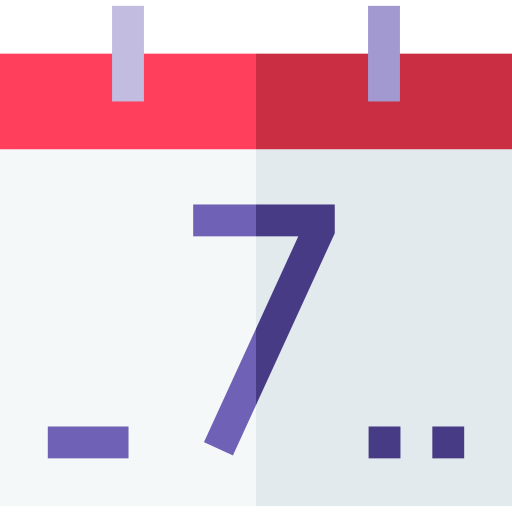

Heat Pump Stuck in Aux Heat Mode
Auxiliary heat is meant to be a temporary backup. It shouldn’t run for hours on end, especially if the outside temperature is above 4°C (40°F).
Typically, it stays on for 30 minutes to an hour before your heat pump takes over again. But if “AUX HEAT” stays on all the time, something might be wrong.
Here are the most common reasons and how to fix them.
It’s Too Cold Outside
If the outdoor temperature is below freezing, your heat pump may be unable to pull enough heat from the air. Auxiliary heat has to work harder to keep up.
This is normal if it’s a particularly cold day. But if you live in an area with frequent deep freezes, consider a dual-fuel system that pairs your heat pump with a gas furnace for better efficiency.
Also, remove snow, ice, and debris around the unit if needed. A proper cold-weather rated heat pump should be able to operate at temperatures well below freezing, but these cost more.
The Thermostat is Set Too High
Heat pumps are designed to warm your home gradually. But if you set your thermostat too high—like cranking it up more than 2-3°C (5-7°F) at once—your system may need auxiliary heat to speed things up.
Lower the thermostat gradually to avoid triggering auxiliary heat unnecessarily. If your thermostat is old, consider switching to a smart thermostat (costs about $100-$400+), which learns your heating habits and prevents aux heat from over-activating.
Heat Pump Malfunction
If your heat pump isn’t working properly, auxiliary heat may stay on as a backup. Issues like a faulty compressor, clogged coils, low refrigerant levels, or sensor problems can all cause aux heat to run longer than needed.
Schedule regular maintenance to prevent malfunctions. Call an HVAC professional to check for mechanical failures if your heat pump constantly relies on aux heat.
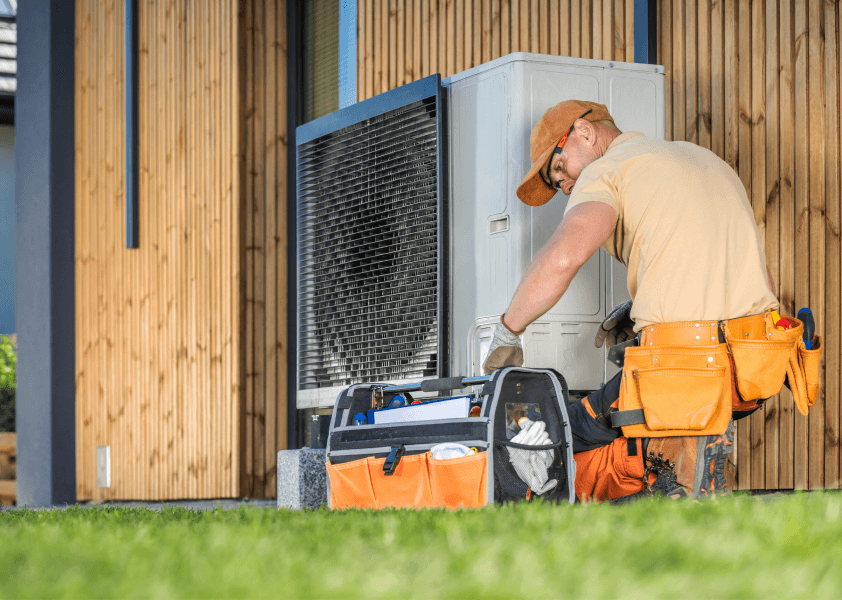
Types of Auxiliary Heating Systems
There are three main types: electric resistance heating, gas furnaces, and oil furnaces.
Electric Resistance Heating
This is the most common type of auxiliary heat, especially in all-electric homes. Inside your air handler are electric heating elements—basically large coils that heat up when electricity passes through them. When auxiliary heat turns on, your system blows air over these coils, warming it before sending it through your vents.
Since it creates heat instead of transferring it like a heat pump, it uses a lot of electricity and is the most expensive auxiliary heat option.
These tend to be more common in milder or temperate climates like the Central, Southern, or Northwest United States.
Gas Furnace (Dual-Fuel System)
A dual-fuel system pairs a natural gas furnace with a heat pump, automatically switching between the two based on outdoor temperatures.
When the heat pump can’t pull enough warmth from the air, the thermostat tells the furnace to take over. Instead of using electric heating, this system burns natural gas to generate heat.
Since gas furnaces work efficiently in freezing temperatures, they provide faster and more cost-effective heat than electric resistance systems.
Oil Furnace
Oil furnaces work much like gas furnaces, but instead of burning natural gas, they burn heating oil. The system pumps oil from a storage tank into a burner, igniting it to produce heat. The hot air is then distributed through the duct system.
Oil furnaces are less common today but are still found in older homes or rural areas without natural gas access.
While oil furnaces provide strong heat, they have higher fuel costs and more maintenance than other options. Homeowners need to schedule regular oil deliveries, and the system itself requires cleaning and upkeep to prevent soot buildup.
Auxiliary Heat vs. Emergency Heat
Auxiliary heat (AUX HEAT) and emergency heat (EM HEAT) both involve backup heating. The key difference is how and when they activate.
Auxiliary heat turns on automatically when your heat pump needs extra help—like when temperatures drop too low, or your system is in defrost mode. It works alongside your heat pump to keep your home warm while minimizing energy use.
On the other hand, emergency heat is a manual setting that completely bypasses the heat pump. You should only use it if your heat pump is malfunctioning or frozen and can’t provide heat. When EM HEAT is on, your system runs entirely on backup heating.
Conclusion
Auxiliary heat isn’t always bad. It’s there to help when your heat pump needs a boost. The real issue isn’t that AUX heat exists. It’s whether your system is relying on it too much.
If auxiliary heat is running constantly, that’s a sign your heat pump might not be working at its best. Instead of guessing, get a certified local HVAC contractor to take a look. Get quotes from trusted professionals in your area, and stop overpaying for heat this winter.
FAQs
How often should auxiliary heat come on?
Auxiliary heat should only turn on when needed, such as when outdoor temperatures drop too low (typically below -2 to 4°C (28-40°F)) or when your home is heating up too slowly.
Why does auxiliary heat smell?
If you notice a burning smell when the auxiliary heat turns on, it’s usually because dust has built up on the electric heating coils. When the system activates for the first time, it burns off the dust, creating that familiar “burnt” smell.
Can I turn off the auxiliary heat?
Most thermostats don’t allow you to manually turn off auxiliary heat since it’s an automatic function. However, you can reduce how often it activates by lowering your thermostat gradually instead of making big jumps in temperature.
Get Quotes
How soon are you looking to buy?*






